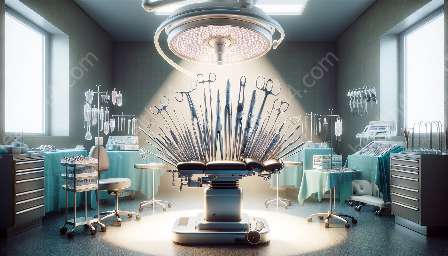Oxygen concentrators are essential medical devices that generate oxygen-rich air for patients with respiratory conditions. In this comprehensive guide, we'll delve into the world of oxygen concentrators, exploring their uses, benefits, and features. We'll also discuss how they are compatible with surgical instruments and medical devices & equipment, providing a holistic view of their applications in the healthcare industry.
Understanding Oxygen Concentrators
Oxygen concentrators are medical devices that extract and concentrate oxygen from ambient air, providing a steady supply of therapeutic oxygen to patients with respiratory disorders. Unlike traditional oxygen tanks, which require refilling or replacement, oxygen concentrators can continuously provide oxygen therapy without the need for frequent replacements.
Oxygen concentrators are widely used in hospitals, clinics, and home healthcare settings to treat conditions such as chronic obstructive pulmonary disease (COPD), emphysema, and other respiratory ailments. They offer a convenient and reliable source of oxygen, improving patients' quality of life and overall well-being.
Key Features of Oxygen Concentrators
Oxygen concentrators come with a range of features designed to optimize oxygen delivery and user experience. Some key features include:
- Flow Rate Settings: Oxygen concentrators offer adjustable flow rate settings to accommodate varying oxygen therapy needs.
- Portability: Some models are designed for increased portability, allowing patients to maintain their oxygen therapy while on the go.
- Filter Systems: Advanced filtration systems ensure the delivery of clean and pure oxygen to patients, reducing the risk of contamination.
- Noise Levels: Modern oxygen concentrators are engineered to operate quietly, minimizing disruptions for patients and caregivers.
- Monitoring and Alarms: Built-in monitoring systems and alarms provide alerts for low oxygen purity, power failures, and other crucial conditions.
Compatibility with Surgical Instruments
Oxygen concentrators play a crucial role in surgical procedures, providing essential oxygen supply to patients undergoing various surgical interventions. Surgeons and medical practitioners rely on oxygen concentrators to ensure optimal oxygen levels during surgeries, enhancing patient safety and recovery.
Additionally, surgical instruments such as anesthesia machines, ventilators, and respiratory support devices work synergistically with oxygen concentrators, forming a comprehensive system for patient care during surgical procedures. The compatibility of oxygen concentrators with surgical instruments facilitates seamless integration within the surgical environment, enabling healthcare professionals to deliver precise and effective care to their patients.
Medical Devices & Equipment: Harnessing the Power of Oxygen Concentrators
Beyond surgical settings, oxygen concentrators are compatible with a wide range of medical devices and equipment, contributing to holistic patient care across various healthcare disciplines. From respiratory therapy devices and oxygen delivery systems to intensive care unit (ICU) equipment, oxygen concentrators complement an array of medical tools, enhancing their functionality and efficacy.
Medical practitioners leverage oxygen concentrators to optimize the delivery of oxygen therapy in emergency medicine, critical care, and long-term patient management. Their compatibility with medical devices and equipment extends the reach of oxygen therapy solutions, benefitting patients across diverse healthcare scenarios.
Exploring Innovation and Advancements
The field of oxygen concentrators continues to evolve with ongoing technological advancements and innovations. Manufacturers are constantly enhancing the performance, efficiency, and usability of oxygen concentrators to meet the evolving needs of healthcare providers and patients.
As medical technology progresses, the compatibility of oxygen concentrators with surgical instruments and medical devices & equipment will continue to expand, opening new frontiers in patient care, clinical interventions, and healthcare delivery.


